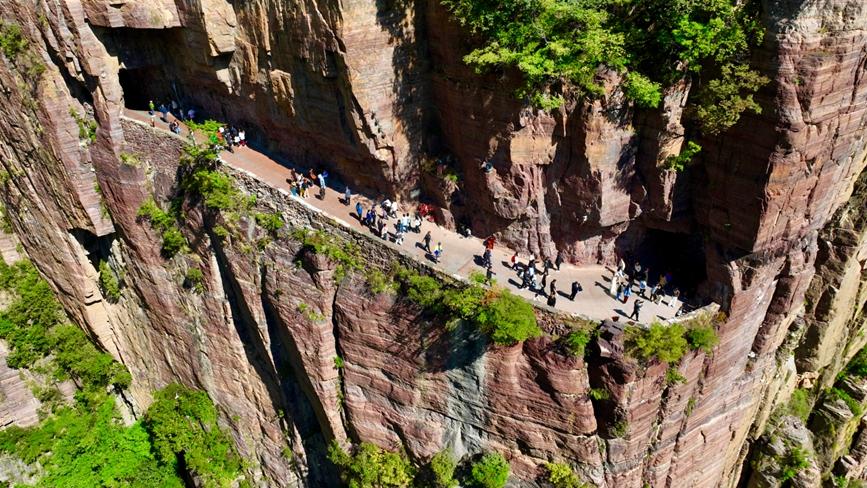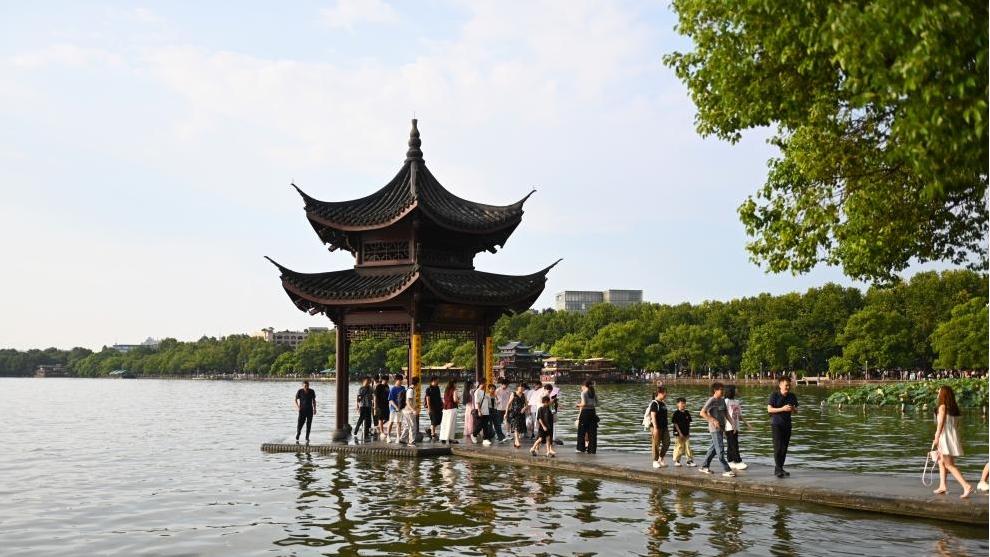View of wetlands in China's Xinjiang
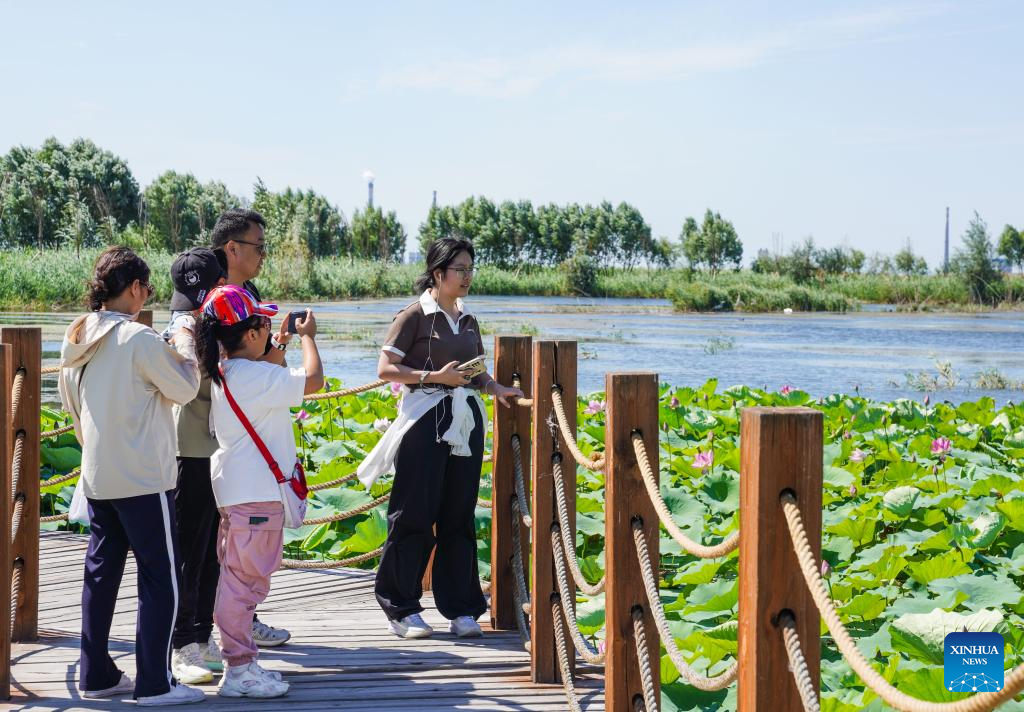
People visit the Manas national wetland park in Manas County, Changji Hui Autonomous Prefecture, northwest China's Xinjiang Uygur Autonomous Region, Aug. 10, 2025. In Xinjiang, new wetlands such as the Manas national wetland park and the Lalikun wetland nature reserve have emerged near the border of Gurbantunggut Desert and Taklimakan Desert, acting as important ecological shelters for migrant birds and safeguarding the biodiversity and oases in the region. (Xinhua/Zhou Jiayi)
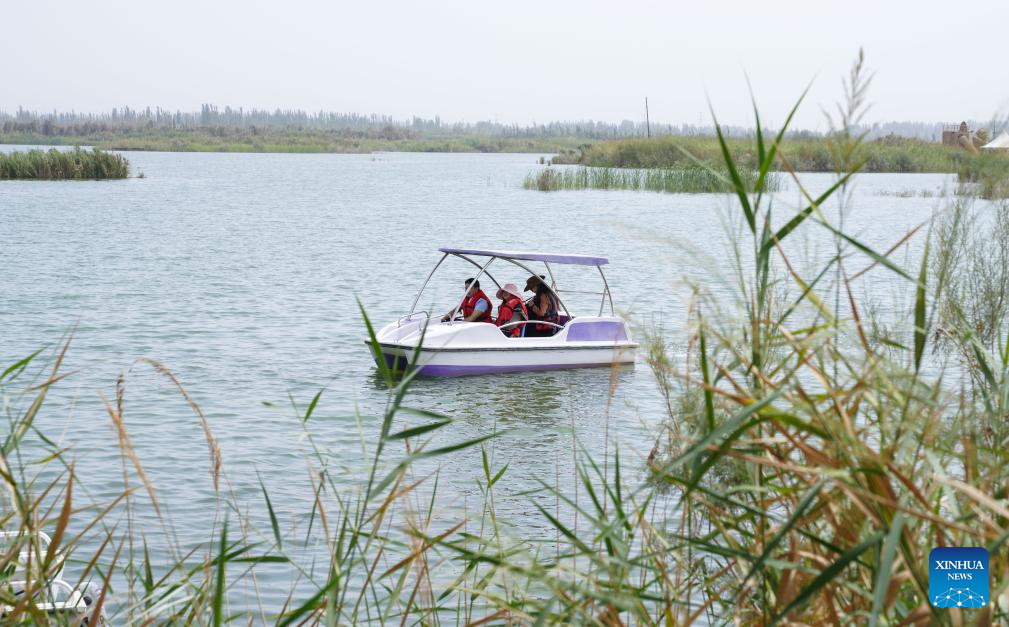
People take a boat at the Lalikun wetland nature reserve in Moyu County of Hotan Prefecture, northwest China's Xinjiang Uygur Autonomous Region, Aug. 6, 2025. In Xinjiang, new wetlands such as the Manas national wetland park and the Lalikun wetland nature reserve have emerged near the border of Gurbantunggut Desert and Taklimakan Desert, acting as important ecological shelters for migrant birds and safeguarding the biodiversity and oases in the region. (Xinhua/Zhou Jiayi)
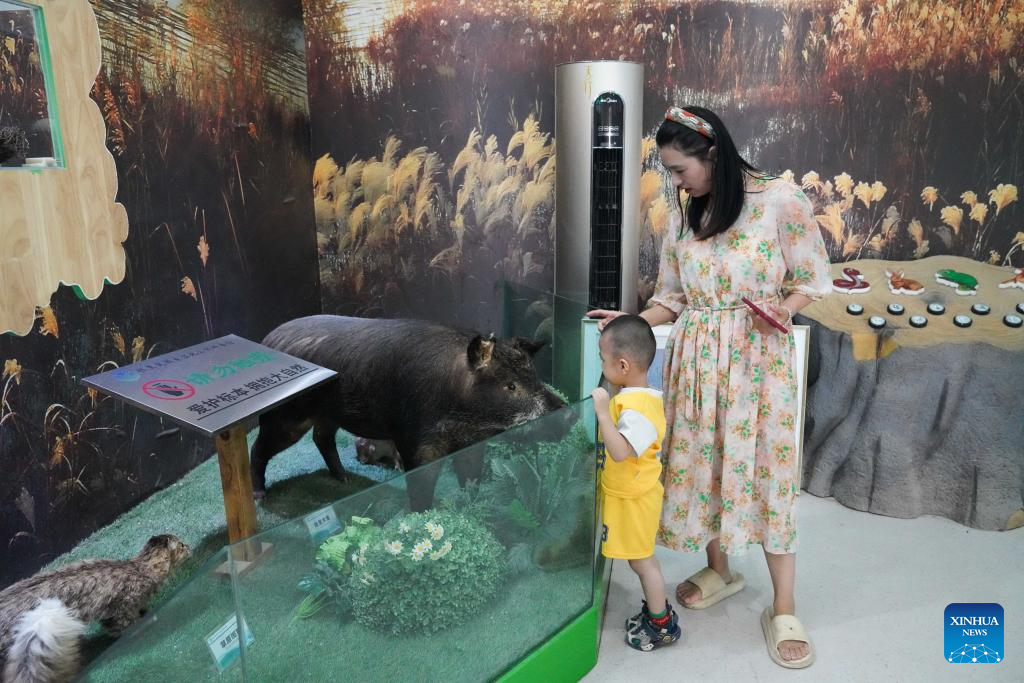
People visit an exhibition hall at the Lalikun wetland nature reserve in Moyu County of Hotan Prefecture, northwest China's Xinjiang Uygur Autonomous Region, Aug. 6, 2025. In Xinjiang, new wetlands such as the Manas national wetland park and the Lalikun wetland nature reserve have emerged near the border of Gurbantunggut Desert and Taklimakan Desert, acting as important ecological shelters for migrant birds and safeguarding the biodiversity and oases in the region. (Xinhua/Zhou Jiayi)
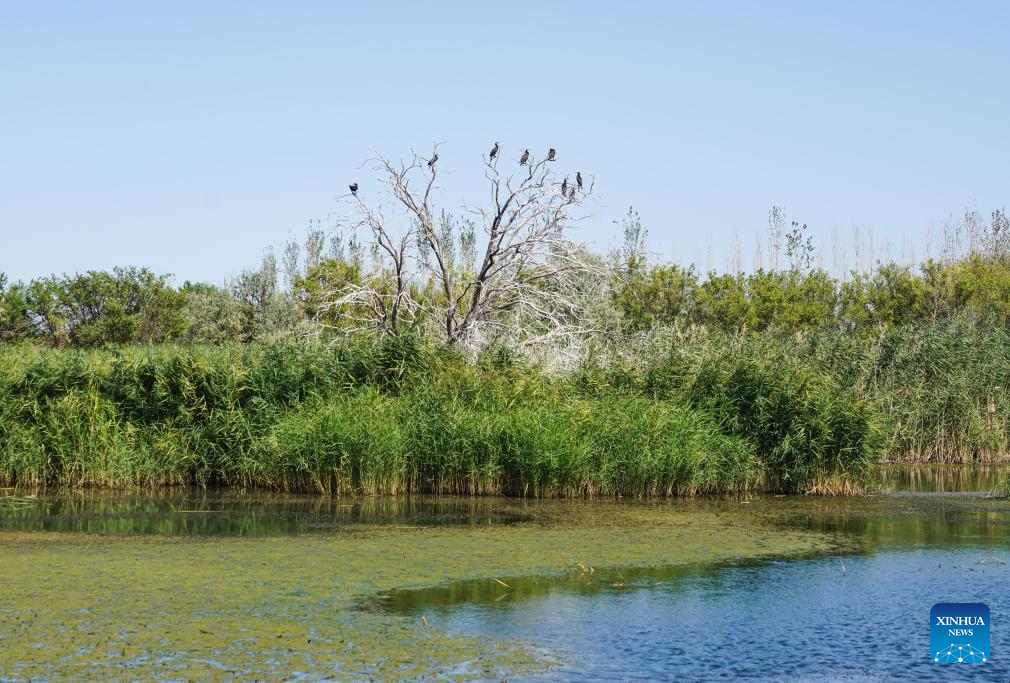
Cormorants rest on branches at the Manas national wetland park in Manas County, Changji Hui Autonomous Prefecture, northwest China's Xinjiang Uygur Autonomous Region, Aug. 10, 2025. In Xinjiang, new wetlands such as the Manas national wetland park and the Lalikun wetland nature reserve have emerged near the border of Gurbantunggut Desert and Taklimakan Desert, acting as important ecological shelters for migrant birds and safeguarding the biodiversity and oases in the region. (Xinhua/Zhou Jiayi)
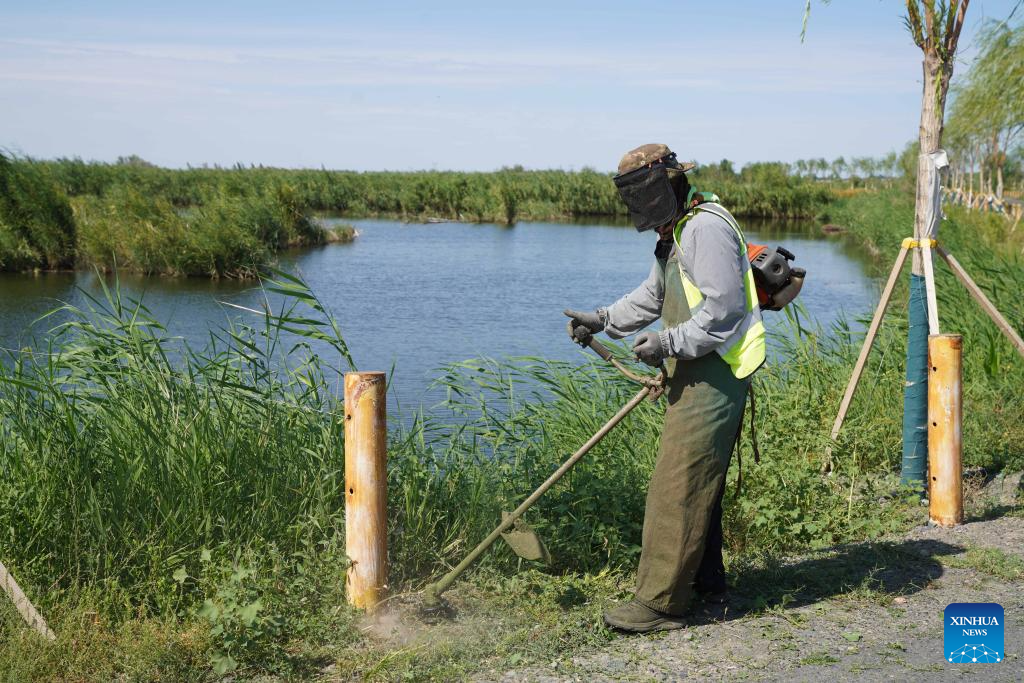
A worker cleans weed at the Manas national wetland park in Manas County, Changji Hui Autonomous Prefecture, northwest China's Xinjiang Uygur Autonomous Region, Aug. 10, 2025. In Xinjiang, new wetlands such as the Manas national wetland park and the Lalikun wetland nature reserve have emerged near the border of Gurbantunggut Desert and Taklimakan Desert, acting as important ecological shelters for migrant birds and safeguarding the biodiversity and oases in the region. (Xinhua/Zhou Jiayi)
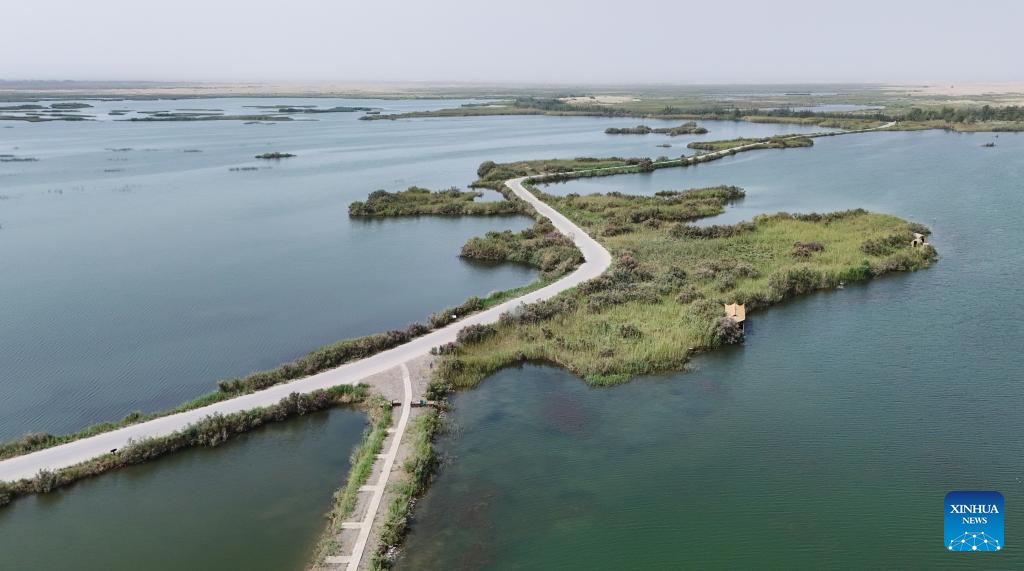
A drone photo taken on Aug. 6, 2025 shows the Lalikun wetland nature reserve in Moyu County of Hotan Prefecture, northwest China's Xinjiang Uygur Autonomous Region. In Xinjiang, new wetlands such as the Manas national wetland park and the Lalikun wetland nature reserve have emerged near the border of Gurbantunggut Desert and Taklimakan Desert, acting as important ecological shelters for migrant birds and safeguarding the biodiversity and oases in the region. (Xinhua/Zhou Jiayi)
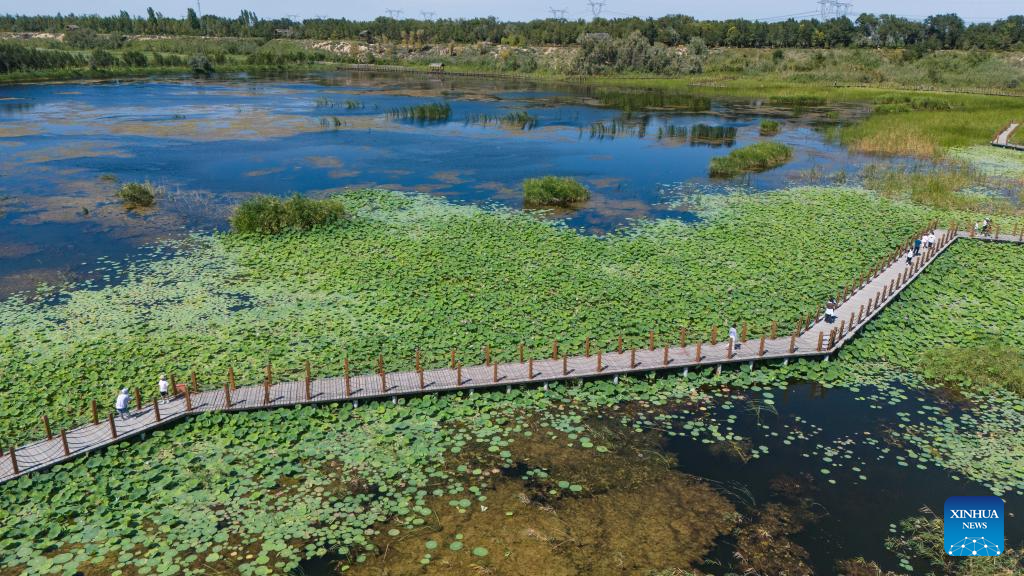
A drone photo taken on Aug. 10, 2025 shows the Manas national wetland park in Manas County, Changji Hui Autonomous Prefecture, northwest China's Xinjiang Uygur Autonomous Region. In Xinjiang, new wetlands such as the Manas national wetland park and the Lalikun wetland nature reserve have emerged near the border of Gurbantunggut Desert and Taklimakan Desert, acting as important ecological shelters for migrant birds and safeguarding the biodiversity and oases in the region. (Xinhua/Zhou Jiayi)
Photos
Related Stories
- Pic story: director of power supply station in Zhaosu County, China's Xinjiang
- In pics: Wuluwat water conservancy project in China's Xinjiang
- Kunlun Mountains scenic area in NW China's Xinjiang attracts visitors during summer vacation
- Intangible heritage aroma in Xinjiang: Experience crafting nang in Hami's ancient streets
- Intangible cultural heritage breathes new life into traditional villages in Turpan, NW China's Xinjiang
Copyright © 2025 People's Daily Online. All Rights Reserved.







